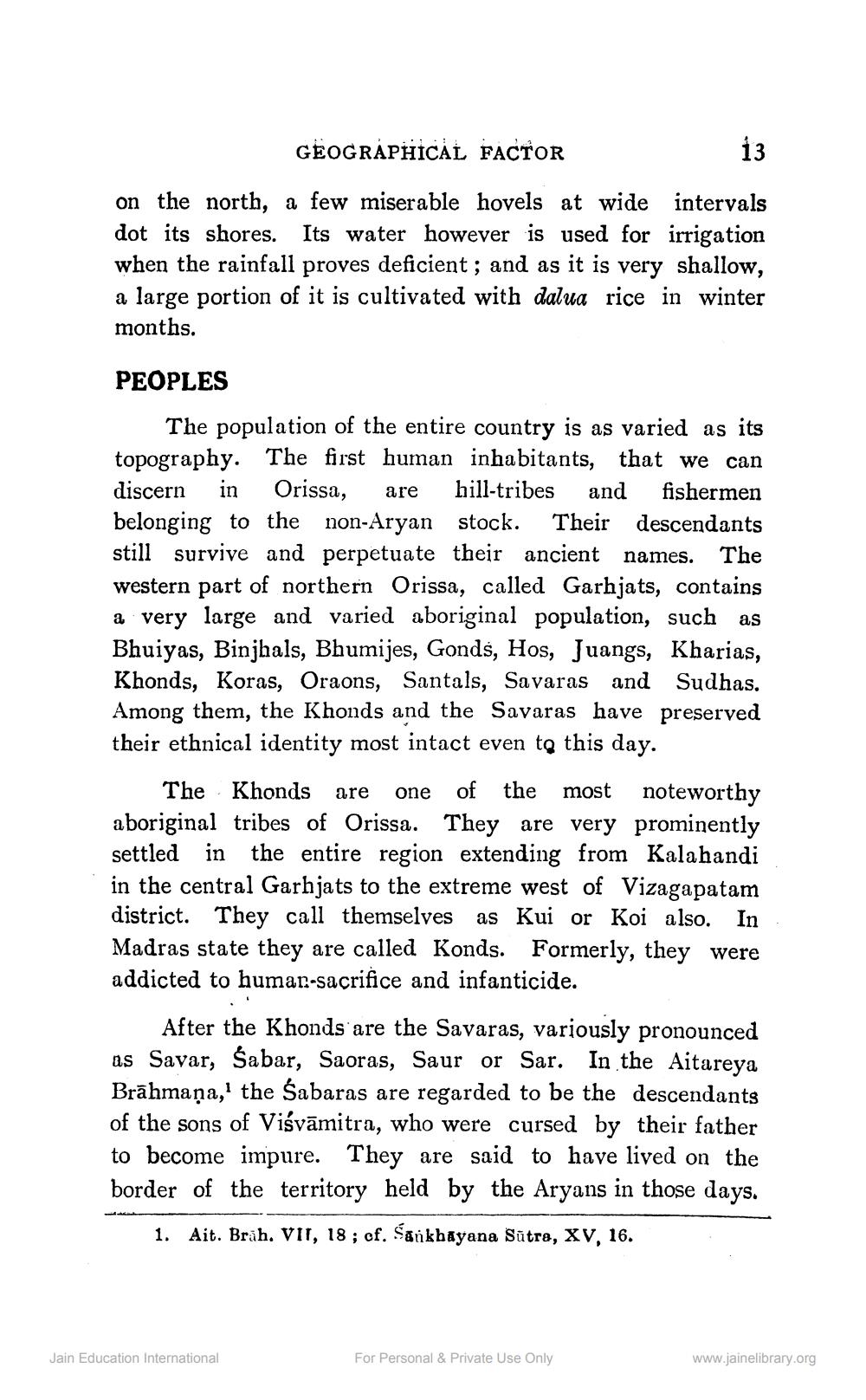________________
GEOGRAPHICAL FACTOR
on the north, a few miserable hovels at wide intervals dot its shores. Its water however is used for irrigation when the rainfall proves deficient; and as it is very shallow, a large portion of it is cultivated with dalua rice in winter months.
PEOPLES
The population of the entire country is as varied as its topography. The first human inhabitants, that we can discern in Orissa, are hill-tribes and fishermen belonging to the non-Aryan stock. Their descendants still survive and perpetuate their ancient names. The western part of northern Orissa, called Garhjats, contains a very large and varied aboriginal population, such as Bhuiyas, Binjhals, Bhumijes, Gonds, Hos, Juangs, Kharias, Khonds, Koras, Oraons, Santals, Savaras and Sudhas. Among them, the Khonds and the Savaras have preserved their ethnical identity most intact even to this day.
The Khonds are one of the most noteworthy aboriginal tribes of Orissa. They are very prominently settled in the entire region extending from Kalahandi in the central Garhjats to the extreme west of Vizagapatam district. They call themselves as Kui or Koi also. In Madras state they are called Konds. Formerly, they were addicted to human-sacrifice and infanticide.
After the Khonds are the Savaras, variously pronounced as Savar, Śabar, Saoras, Saur or Sar. In the Aitareya Brāhmaṇa,' the Śabaras are regarded to be the descendants of the sons of Viśvāmitra, who were cursed by their father to become impure. They are said to have lived on the border of the territory held by the Aryans in those days.
1. Ait. Brah. VII, 18 ; cf. Sarkhayana Sūtra, XV, 16.
Jain Education International
For Personal & Private Use Only
www.jainelibrary.org




